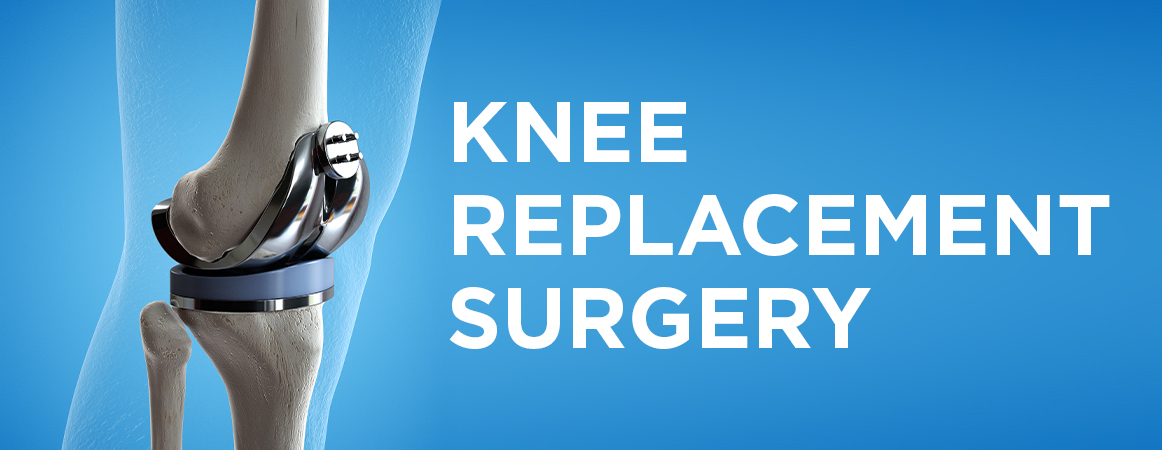Knee Replacement Surgery: Procedure, Types and Risks
A total knee replacement, also called knee arthroplasty, is a surgical procedure to resurface a knee damaged by severe arthritis or severe knee injury. A metallic and plastic cap is attached over the ends of the bones surrounding the joints and the kneecap.
Many types of arthritis can cause joint pain. One of the most common is osteoarthritis, which causes the breakdown of cartilage and bone in the knee joint.
Rheumatoid arthritis, a progressive and systemic inflammatory condition, leads to inflammation in the synovial membrane that causes fluid to accumulate excessively leading to pain and stiffness.
Injury-related arthritis, traumatic arthritis, may cause damage to the cartilage of the knee.
Knee replacement surgery aims to resurface the damaged parts of the knee joint and relieve knee pain that cannot be eased by other treatments.
Doctors usually recommend knee replacement as a last resort when other, less invasive treatments fail. They typically try to avoid prescribing this option due to the risk of possible infections and blood clots. The options that doctors typically try first are:
- weight loss
- medications
- physical therapy
- assistive devices, such as a knee brace or a cane
Key considerations when deciding if a patient is a good candidate for knee replacement surgery include:
- how much the knee pain interferes with the patient’s daily activities
- if the knee is deformed
- age
- overall health
Types of Knee Replacement Surgery
There are two main types of knee surgery:
- Total replacement sugery, where the entire joint is replaced with artificial surfaces
- Partial knee replacement, where only one damaged compartment of the knee is replaced
Total knee replacement is the more common of these two procedures.
In determining if knee replacement surgery is the right option for the patient, the orthopedic doctor assesses the range of motion, stability, and strength of the knee. X-rays are used to determine the damage to the knee.
The doctor can choose from a variety of knee replacement prostheses and surgical techniques, considering the patient’s age, weight, activity level, knee size and shape, and overall health.
To see a specialist can take weeks. If you don’t want to wait, book an appointment with the best doctors in Pakistan at Memon Medical Institute (MMI).
Knee Replacement Surgery Procedure: What to Expect?
Knee replacement surgery is often performed while the patient sleeps under general anesthesia. Before the surgery starts, the patient is given an intravenous antibiotic to help prevent infection and a nerve block around the knee to numb it. The numbness will gradually go away after the procedure is completed.
It is important to start moving the new joint post-surgery. This will increases blood flow to the leg muscles and help prevent swelling and blood clots.
Once the patient is at home, it is crucial to keep the surgical area clean and dry as per the doctor’s specific instructions.
The patient is also asked to do frequent breathing exercises and gradually increase the activity level. A physical therapist usually shows how to exercise the new knee.
Making certain modifications to your home may help during the recovery, such as:
- Proper handrails along all stairs
- Safety handrails in the shower or bath
- Shower bench or chair
- Raised toilet seat, etc.
The doctor also gives additional or alternate instructions after the procedure, depending on the patient’s particular situation.
Knee Replacement Surgery Risks
As with any surgical procedure, complications can occur. Some possible complications may include, but are not limited to, the following:
- The replaced knee joint may become loose, be dislodged, or may not work the way it was supposed to be. Hence, the joint may have to be replaced again in the future.
- Injured nerves or blood vessels in the area of surgery, result in weakness or numbness.
- There may be other risks depending on the patient’s specific medical condition. Be sure to discuss any concerns with your doctor before the procedure.
- Failure of the artificial joint. Daily use wears on even the strongest metal and plastic parts and some people are more likely to have joint failure than others
For the best recovery, follow all of your doctor’s instructions concerning wound care, diet, and exercise.


